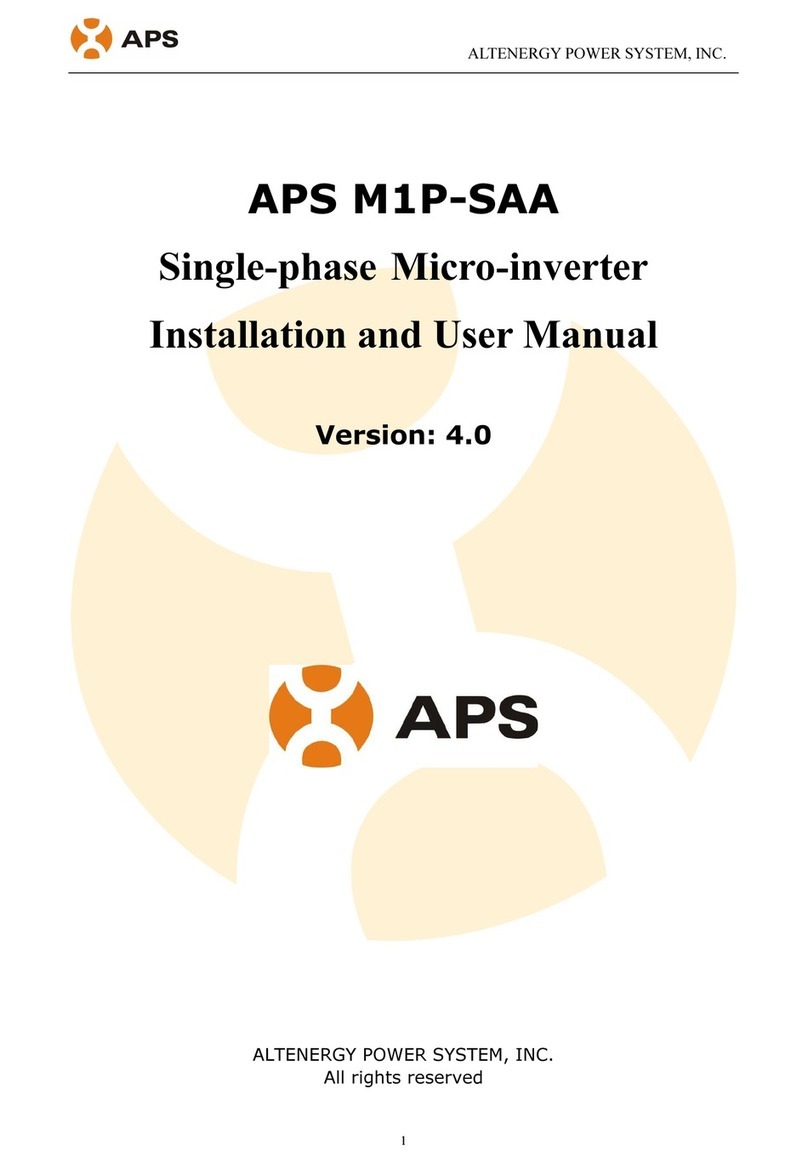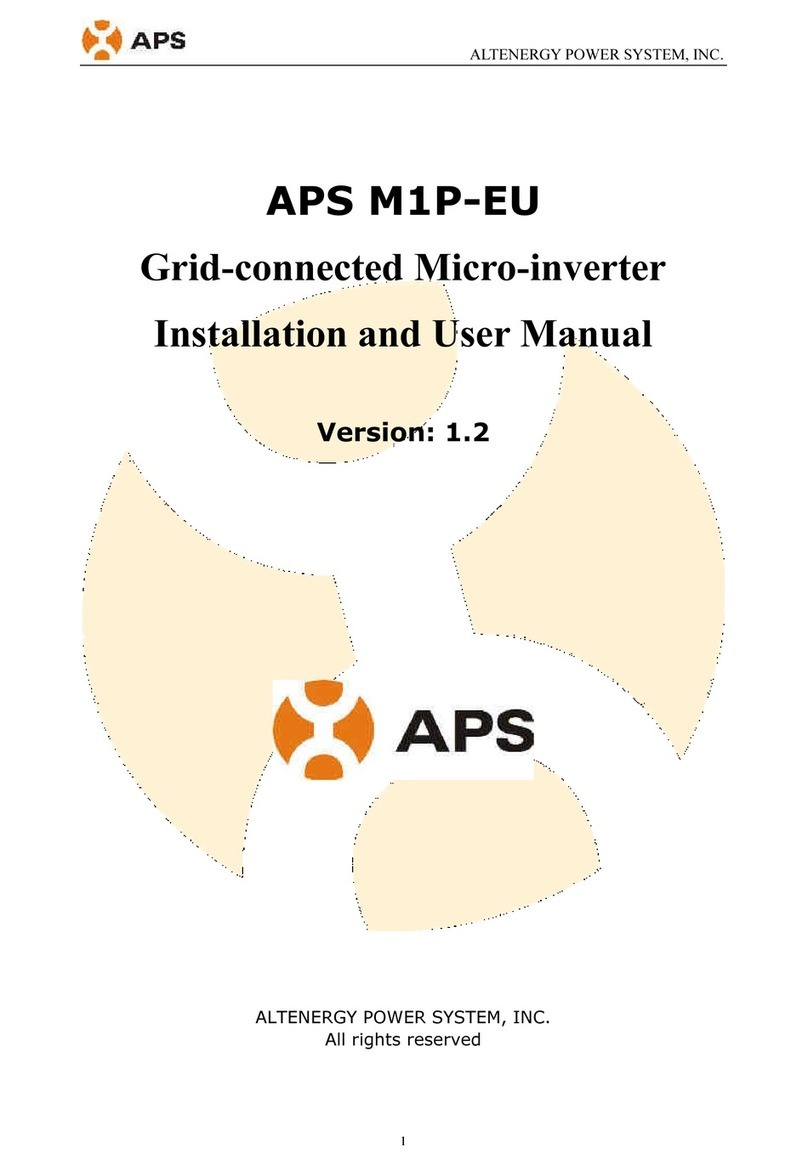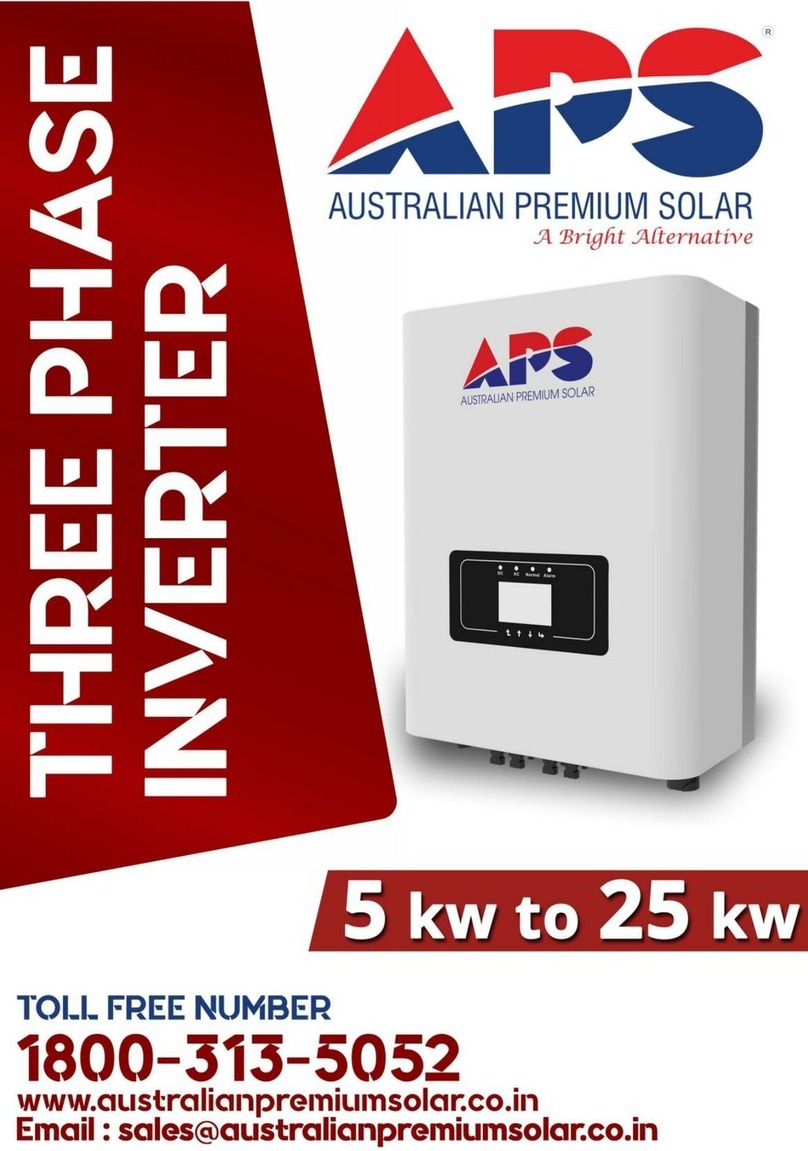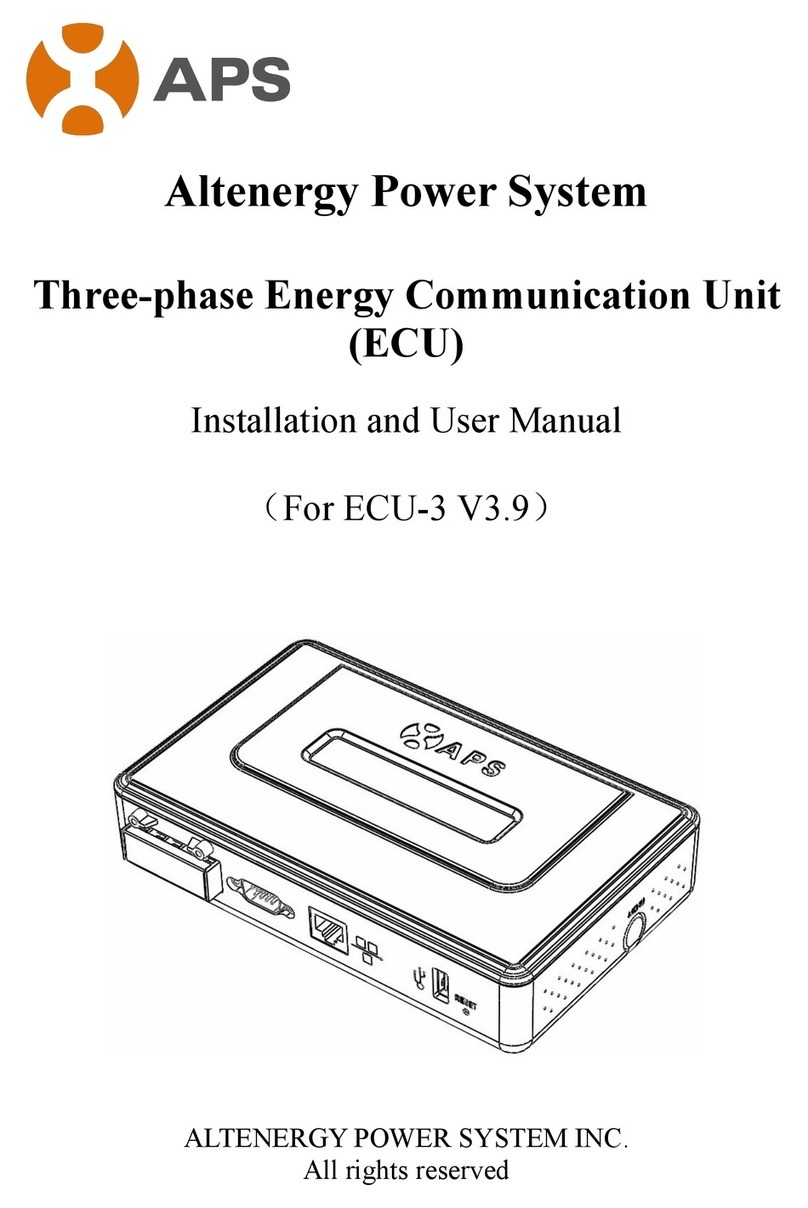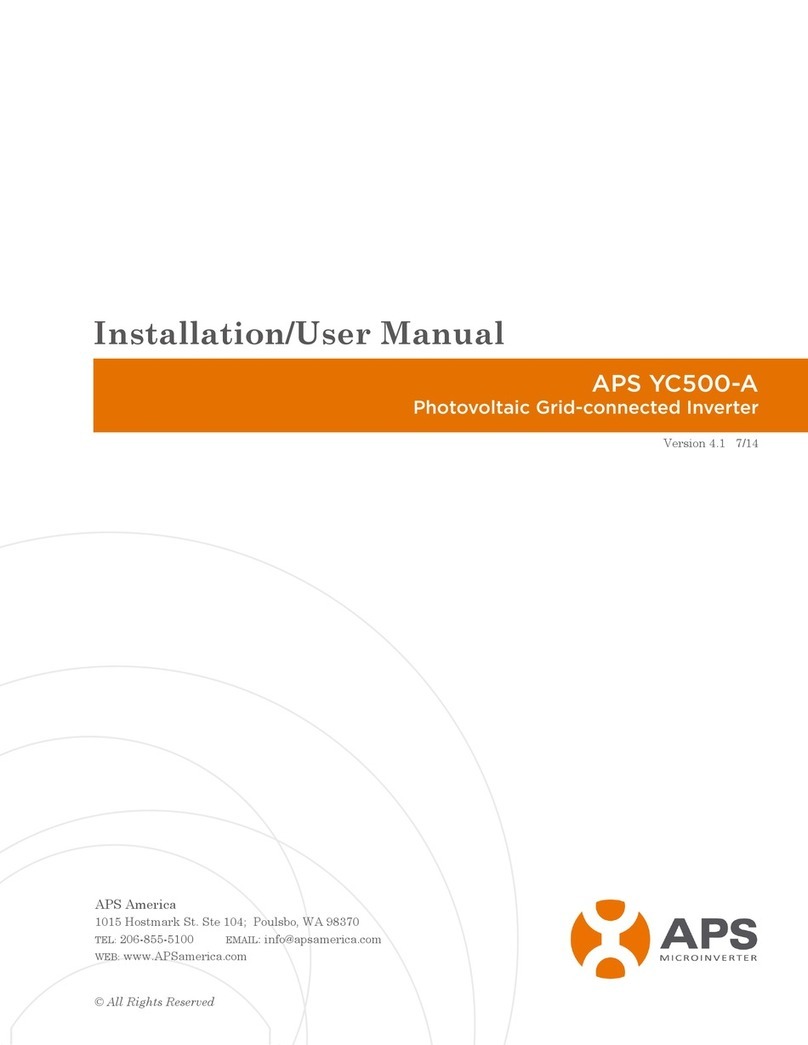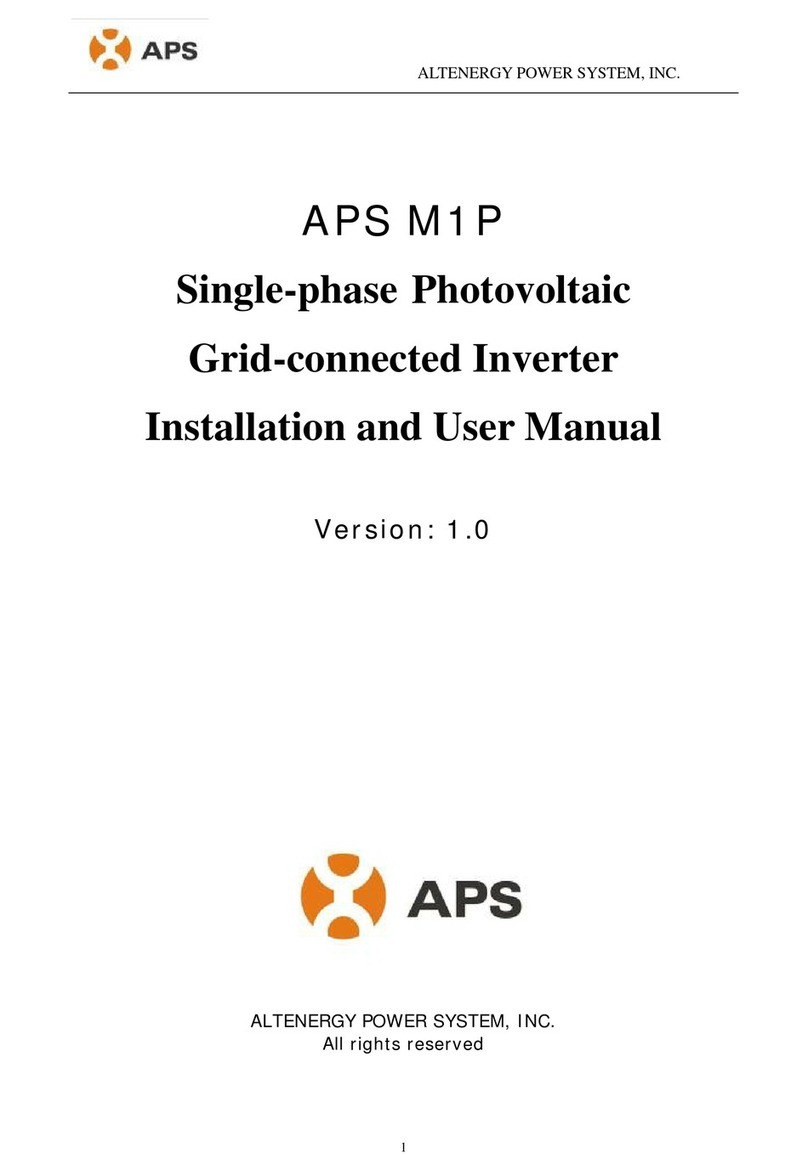
APS YC500A-MIW Installation/User Manual 4
APS Microinverters maximize PV energy production
Each PV module has individual Maximum Peak Power Tracking
(MPPT) controls, which ensures that the maximum power is exported
to the utility grid regardless of the performance of the other PV
modules in the array. When PV modules in the array are affected
by shade, dust, orientation, or any situation in which one module
underperforms compared with the other units, the APS Microinverter
ensures top performance from the array by maximizing the
performance of each module within the array.
More reliable than centralized or string inverters
The distributed APS Microinverter system ensures that no
single point of system failure exists across the PV system. APS
Microinverters are designed to operate at full power at ambient
outdoor temperatures of up to 149°F (65°C). The inverter housing
is designed for outdoor installation and complies with the IP65
environmental enclosure rating.
Simple to install
You can install individual PV modules in any combination of module
quantity, orientation, type, and power rate.
Smart system performance monitoring and analysis.
The APS Energy Communication Unit (ECU) is installed by simply
plugging it into any wall outlet and providing an Ethernet or Wi-
Fi connection to a broadband router or modem. After installing the
ECU, the full network of APS Microinverters automatically reports
to the APS Energy Monitor and Analysis (EMA) web server. The
EMA software displays performance trends, informs you of abnormal
events, and controls system shutdown when it is needed. (See ECU
manual for instructions.)






